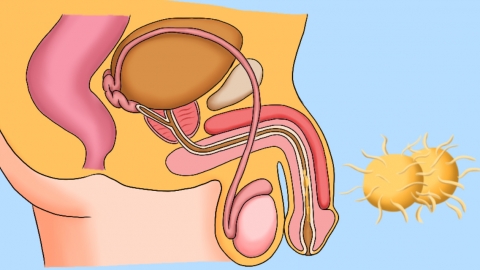What Are the Symptoms of Gonorrhea in Men?
Generally, the main symptoms of gonorrhea in males include frequent and urgent urination, purulent discharge from the urethral opening, redness, swelling, and pain at the urethral opening, painful urination, and discomfort or pain in the perineal area. If these symptoms occur, it is recommended to seek timely diagnosis and treatment at a regular hospital. Detailed explanations are as follows:
1. Frequent and Urgent Urination
After Neisseria gonorrhoeae infects the urethra, it stimulates the urethral mucosa, causing congestion, edema, and increased sensitivity, which leads to frequent and urgent urination. Patients experience an increased frequency of urination, with a strong urge to urinate multiple times within short intervals, although the volume of urine passed each time is small.

2. Purulent Discharge from the Urethral Opening
Neisseria gonorrhoeae multiplies extensively within the urethra, triggering an inflammatory response that increases mucus secretion from the mucosa and results in purulent discharge. In the early stages of the disease, the discharge is typically thin and mucoid, gradually becoming thicker and turning yellow or yellow-green in color. Upon waking, the urethral opening may be obstructed by the discharge.
3. Redness, Swelling, and Pain at the Urethral Opening
Inflammation irritates the mucous membrane at the urethral opening, causing congestion and edema, leading to redness and swelling. Inflammatory factors also stimulate nerve endings, resulting in pain at the urethral opening, which intensifies upon touch or during urination.
4. Painful Urination
The urethral mucosa is damaged due to inflammation, and the urine刺激 the damaged mucosa during urination, causing a distinct burning or stabbing sensation. The pain typically persists throughout the act of urination, and some patients may continue to feel discomfort afterward.
5. Perineal Discomfort or Pain
As the condition progresses, the inflammation may spread to the posterior urethra or prostate, triggering inflammation in these areas and causing perineal discomfort. The pain is often described as a dull ache or a feeling of pressure, which may worsen after prolonged sitting or extended urine retention.
It is important to maintain good personal hygiene by keeping the external genital area clean and dry. Avoid sharing personal items such as towels or underwear to prevent cross-infection. Sexual activity should be avoided during treatment, and sexual partners should also undergo examination and treatment simultaneously. In terms of diet, it is advisable to reduce the intake of spicy and irritating foods, drink plenty of warm water to help flush inflammatory secretions from the urethra, and support the body's recovery process.




